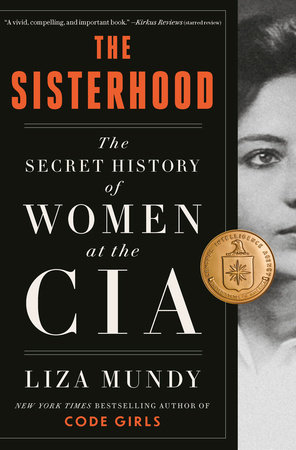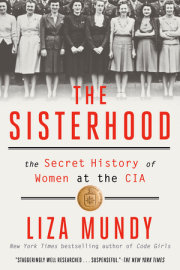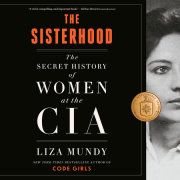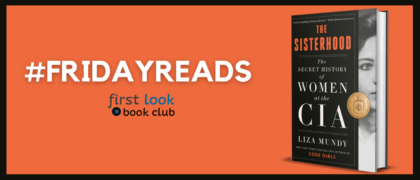Chapter 1
Station WWashington, DC
Winter 1944In the uncertain winter of late 1944, with the end of war close yet frustratingly distant, a stream of well-dressed men and women filed through the front door of a “drab brownstone building” in downtown Washington, DC. They arrived between eight-fifteen and eight-thirty every morning except Sunday. Before the war, the brownstone had been an ordinary home, but not any longer. The nation’s capital had exploded in population over the past two years, as American citizens, foreign officials, and soldiers arrived to serve the war effort. Every available piece of real estate had been snapped up. Barracks-like temporary buildings dotted the capital’s green spaces: there were Quonset huts near the Reflecting Pool, even a government office in an old roller-skating rink. Near the Mall, members of America’s diplomatic and military corps labored in hulking, drafty offices through which messenger boys rode on bicycles. On E Street, in Foggy Bottom, on an elevated patch of land near the Christian Heurich Brewing Company, another ragged cluster of buildings was shaping up as the heart of the country’s espionage establishment.
The brownstone was unmarked—anonymous by design. Bundled against the winter weather, each person entering the building arrived bearing a unique paper card. Inscribed on the small card was a false name, the letter W, and a number. Each day’s group consisted of about eighteen applicants, their arrival times staggered so they could be processed one by one. Most had no idea what lay in store, but they knew why they had come. They sought employment in a new wartime agency: the Office of Strategic Services. They were applying to be spies.
Depending on who—if anyone—had briefed them, applicants might have been told to expect a series of tests, during a day that would be “interesting and profitable as well as strenuous.” Upon arrival, they were told to present their cards to the “clerk on duty.” Yet even that simple instruction was itself a test. At desks inside the foyer sat two officials, neither of whom made any effort to greet newcomers warmly, or at all. They sat silent, waiting for the applicant to make the first move. “Here was a difficult situation,” as a report later noted. Some applicants were put off; some were flustered; some became “aggressive and sarcastic.” All reactions were noted. If a person asked a reasonable question, such as “Is this the right place?” the question would be “challenged immediately” to throw the asker off guard.
After the candidate managed to present the card, the intake officers introduced themselves. One was a psychiatrist, the other an assistant. They would be today’s examiners.
Male applicants were directed to the basement, to change into Army fatigues. The aim was to make each man appear equal before his peers, so nothing would be known of his job, his social class, his military rank, his role in what might be called real life. He would come before the group naked, as it were, shorn of insignia or “ego support.” He must try to prove his ability to work with others and his capacity for leadership, if he had any.
Women were taken to another room to remove coats and hats. Since the women were, well, women, no further equalization was thought to be needed.
Applicants received a purple-inked sheet of instructions, fragrant from the ditto machine, and learned they would be graded on comprehension. The instructions were intentionally vague: The psychiatrists wanted to see how recruits reacted to confusion. Some read quickly; others read, hesitated, reread.
The instructions told applicants they’d been called there to assess their assets and liabilities for confidential spy work. They had been instructed to develop a cover story—a fake identity they could sustain. They were to reveal nothing about their real lives, apart from what they wrote on a personal history form that would be seen only by the examiners.
The applicants moved on to room 41, which had been turned into a classroom. Here they found desks, pencils, and copies of a questionnaire. They were given one hour to complete it. Questions included their parents’ names and places of birth; their family’s politics and religion; whether they had siblings and what were their ages. Then the questions became more probing. Which parent did you feel closer to at various ages? Which parent wielded the discipline in the house? Do you often think of your father? If so, is it with affection or resentment?
Applicants answered questions about past marriages, illnesses, and foreign travel. Did they drink alcohol? Had they ever been sued? The questions invited self-reflection or even stoked potential emotional vulnerability.
If you came into a large fortune, what would you do with the money?
What embarrasses you?
What did you lack most as a child?
After one hour, a staff member called stop, explaining that “the rest of the morning would be tight and the tempo fast.” They moved on to a health form—Did they suffer dizziness? bad dreams? headaches?—then a “work conditions” survey in which they were asked how they felt about work that involved danger; lots of parties; a hot, humid climate; responsibility; initiative; monotony; “working in close relations with Negros”; “working in close relations with Orientals”; working “exclusively with women”; or “seeing only men for long periods of time.” Did they mind dirt? What if they were sent to a region with a lot of malaria, syphilis, alcoholism? Applicants were being considered for work in the global war theater, an array of overseas locations in which one fact held certain: something, probably many things, would go wrong.
After forty-five minutes, a staff member greeted the test takers. This was the security talk. At no time should they reveal their real name. If they recognized another person present, they should not let on.
In the afternoon, they would gather for a group discussion. The first task was to select a problem the United States was likely to face after the war, then arrive at a solution and plan of action. The point was to sort leaders from followers, listeners from talkers. Each part of the day was a test, including breaks.
“Lunch will be served in room 21 at about twelve forty-five p.m.,” the staffer told them. “It will probably be announced by the cook shouting, ‘Let’s go back!’ ” The official explained: “We have tried to get her to say something more intelligible, but we have better success if we simply tell each class of students what this strange phrase means and let it go at that.” They were observed, to see how they reacted to weird behavior.
“You’re going to be kept pretty busy today, but you will have occasional brief breaks,” the staff member continued. “During these periods we urge you to go to room 31, in which you will find a ping-pong table, some cards, a checkerboard, and some other small recreational equipment. This is your room and you are encouraged to go to it for visiting, rest, and relaxation.”
At lunch, the staff noted how people interacted. “Some were uncommunicative and ill at ease,” the report noted. “Others found it difficult to talk of anything other than their experiences of the morning. Some competed constantly for the staff members’ attention, snubbing or interrupting their fellows.”
During breaks—while playing ping-pong or darts—they were observed even more closely. Were they competitive? Friendly? Shy? Aggressive? How did they function in a group? Were they—as instructed—observing one another even as they were being observed?
The need for a formal US intelligence service had become clear even before America entered World War II. In May 1940, Germany swept through Belgium and marched into France, where more than three hundred thousand British and French troops found themselves stranded at the port of Dunkirk. England sent fishing boats, ferries, and every other manner of watercraft to rescue them, evacuating close to 340,000 troops—more than one-third of them French—but only after taking disastrous casualties. Heavy equipment, now under Hitler’s control, was left behind. Amid the ensuing months of blitzkrieg and occupation, England stood vulnerable and alone. President Franklin Roosevelt needed to know two things above all: Could Britain stand? And, if the United States entered the war, did America have what it needed to win? To the first question, US ambassador Joseph Kennedy, reporting from London, predicted England would be defeated by the Germans.
Copyright © 2023 by Liza Mundy. All rights reserved. No part of this excerpt may be reproduced or reprinted without permission in writing from the publisher.












